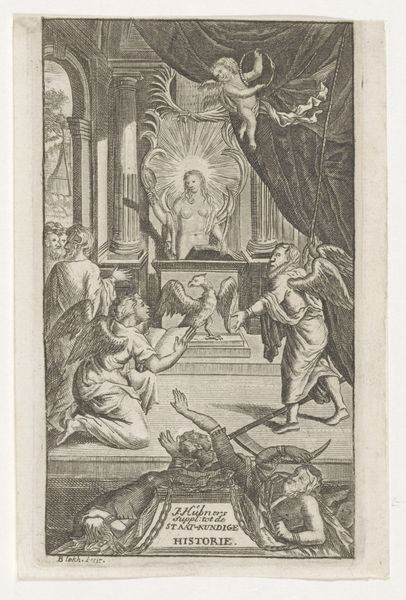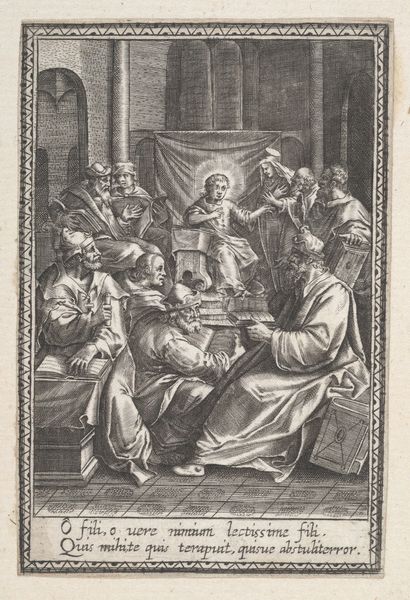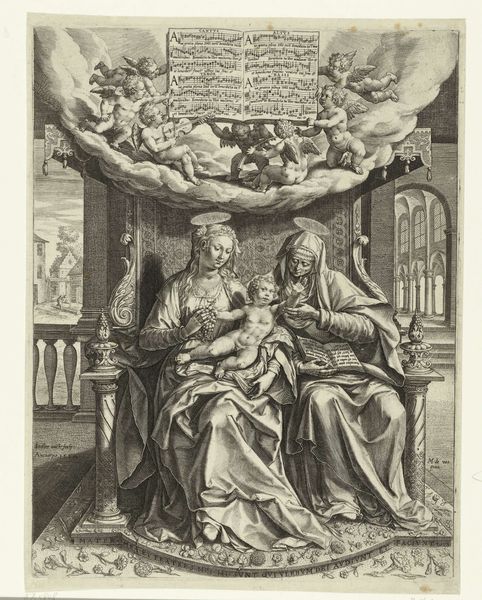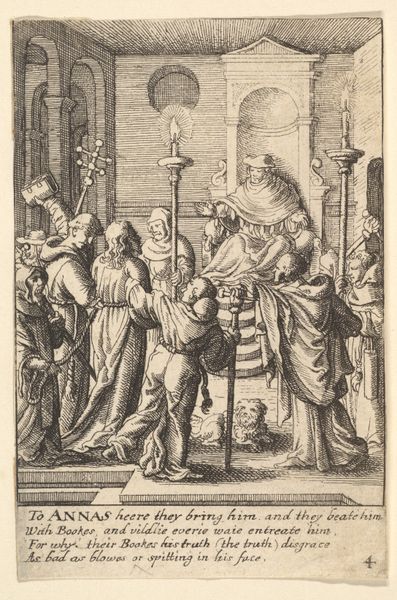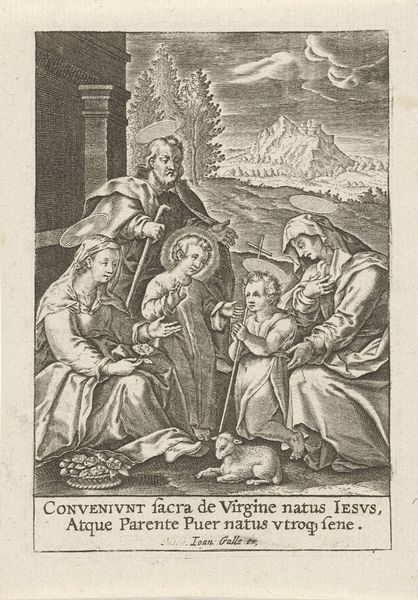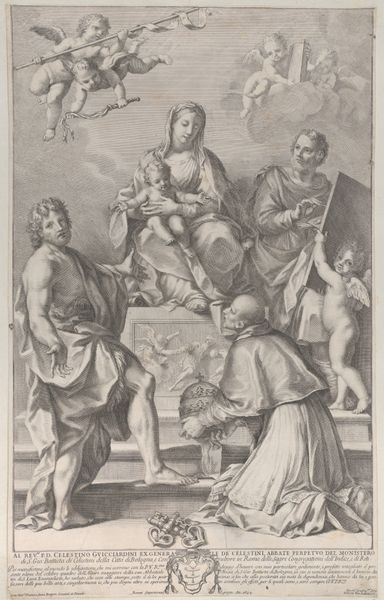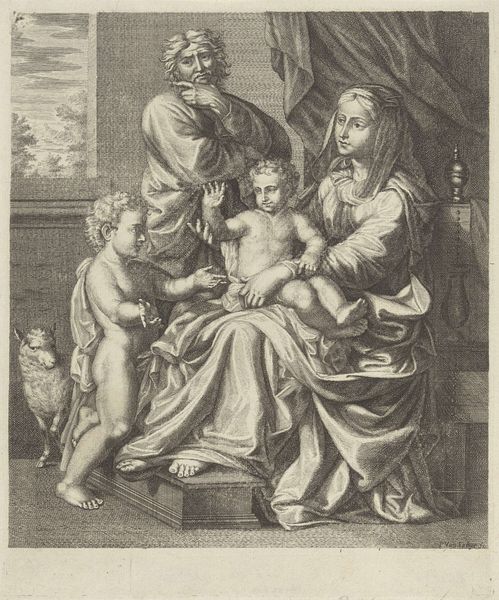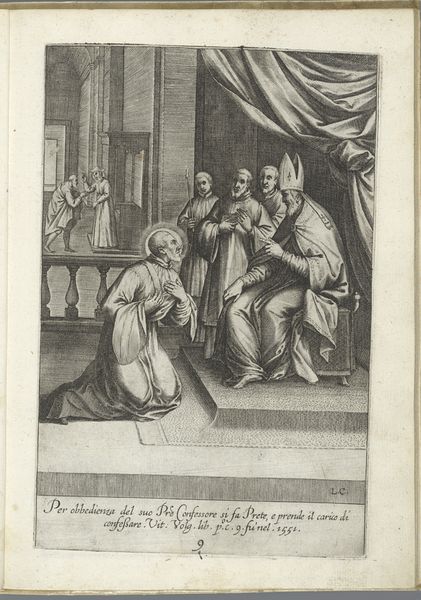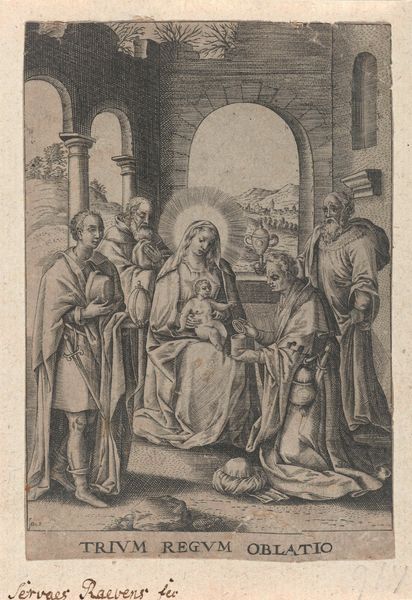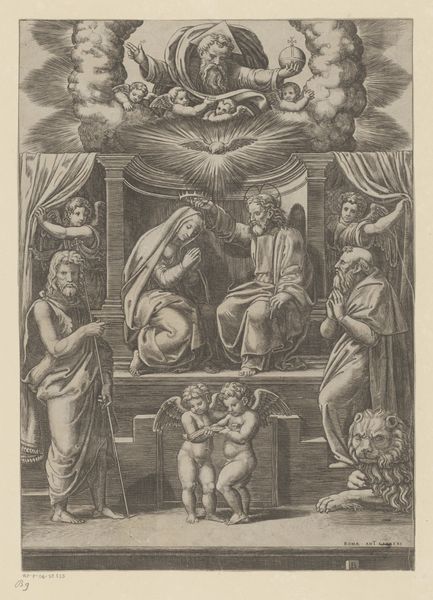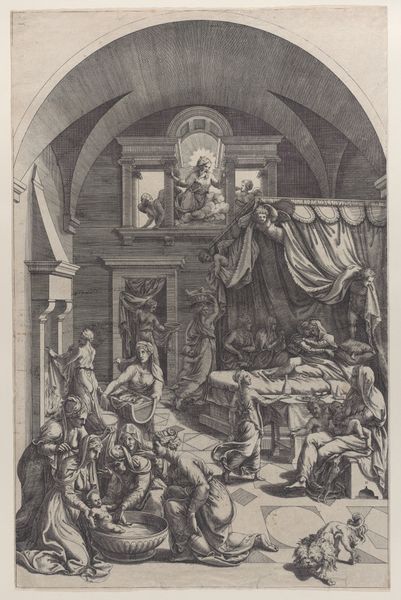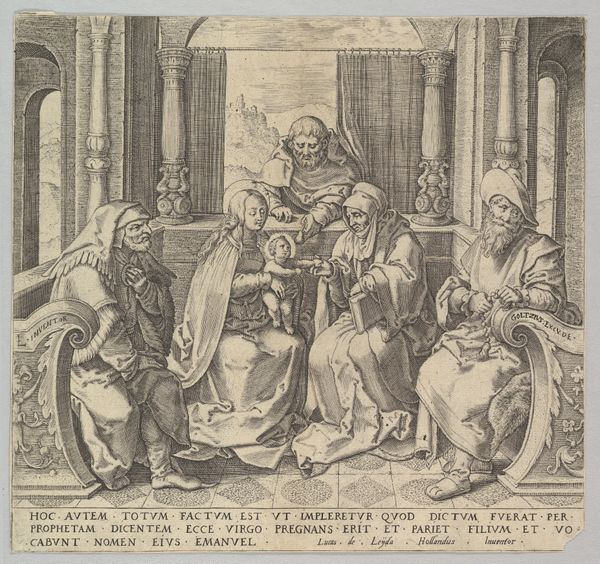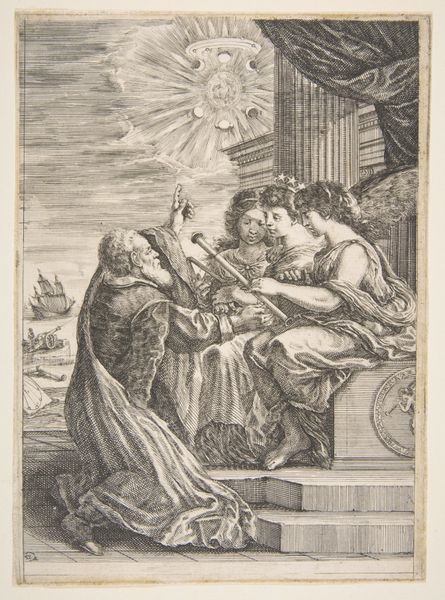
print, engraving
#
portrait
#
baroque
# print
#
caricature
#
history-painting
#
engraving
Dimensions: height 307 mm, width 193 mm
Copyright: Rijks Museum: Open Domain
Editor: This is a print from 1676 titled "Benedikt Carpzov bij tronende koningin," or "Benedikt Carpzov with a Throne Queen," which seems to be made using engraving techniques. The scene is quite formal. I wonder, what narratives might this piece be trying to tell us about power and representation? Curator: That’s a crucial starting point. Beyond the immediate depiction, consider how baroque portraiture, especially engravings meant for wide distribution, functioned as tools for constructing identity and solidifying social hierarchies. Look at Carpzov’s positioning relative to the queen: What does it suggest about legal authority and its relationship to royal power during that period? Does it challenge the established notions? Editor: I notice the inclusion of angels with scales, but the queen holds court with a child on her lap. This mixing of religious and monarchical elements feels... complex. Is this common? Curator: The interplay of religious, legal, and dynastic symbolism isn't accidental. Think about the anxieties of succession and the role of law in maintaining order. The queen could represent the establishment of traditional power structures that were commonly understood at the time. How does this imagery play into contemporary understandings of leadership and legitimacy, considering both the divine right of monarchs, the new intellectual perspectives arising with the Enlightenment, and religious reforms spurred by the Reformation? What do you see happening here in this convergence? Editor: It seems there is an inherent desire to find common ground by bridging traditions and innovations to maintain continuity. Yet there is this almost staged or performative air. Curator: Exactly. And understanding that staged performance reveals the tensions that were intrinsic to the very idea of governance at this historical crossroads. We might question who benefited from that continuity, and who was excluded or actively marginalized. Editor: That gives me a whole new perspective on how to analyze not just what’s being shown, but *why*.
Comments
No comments
Be the first to comment and join the conversation on the ultimate creative platform.
